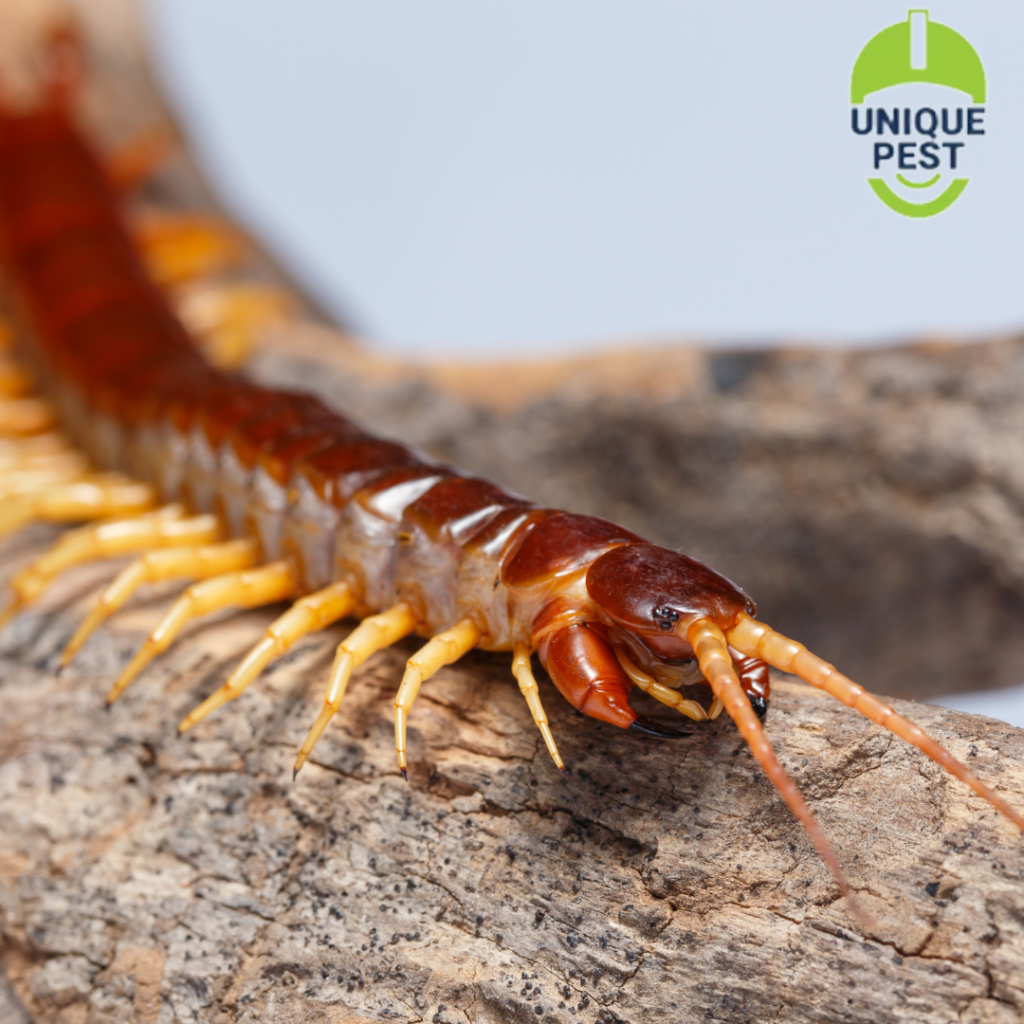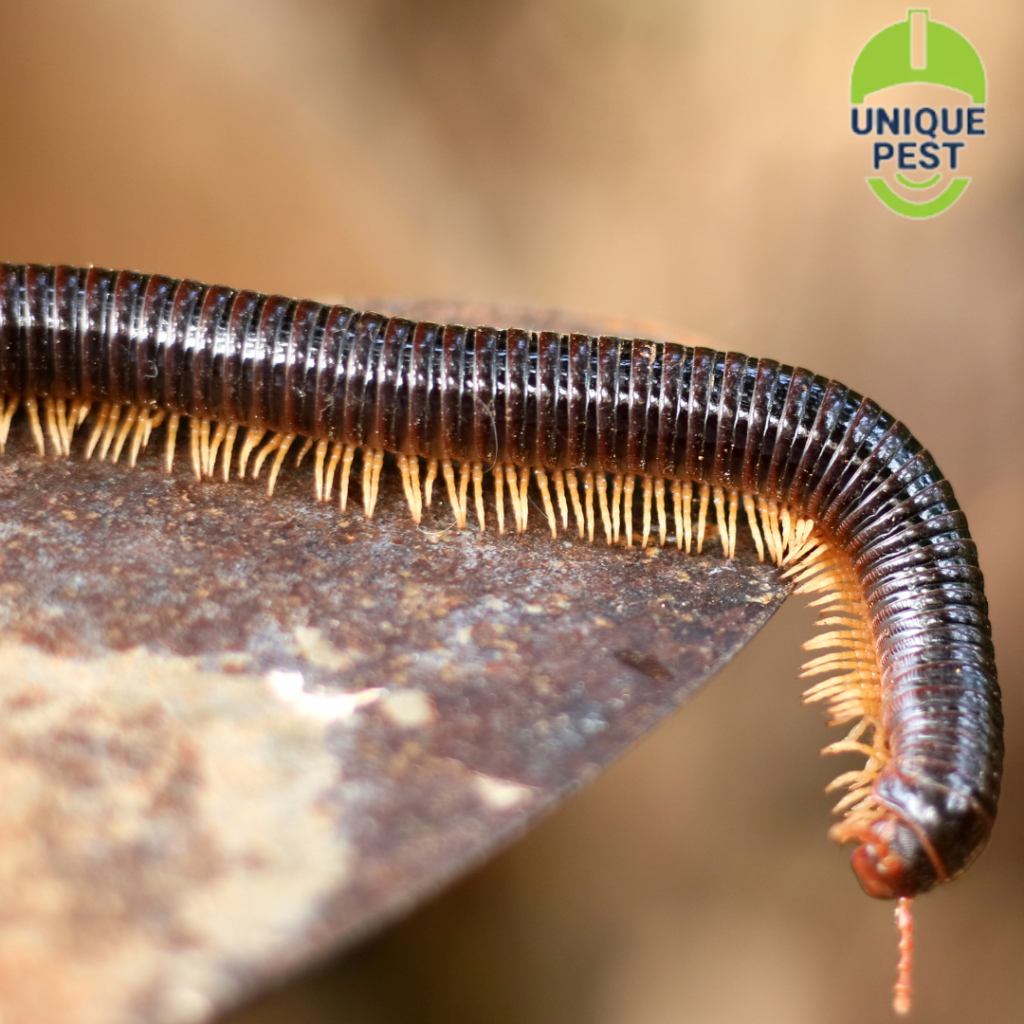Centipedes and millipedes – those creepy crawlies with a multitude of legs that send shivers down our spines. While they share some similarities, understanding their differences is key to effectively preventing them from invading your home. Let’s dive into the world of these fascinating arthropods and learn how to maintain a pest-free environment.
Understanding Centipedes: The Swift Predators

Physical Characteristics: Centipedes boast flattened, elongated bodies, each segment sporting a single pair of legs. The leg count varies, ranging from 15 to a whopping 177 pairs! Typically brown, reddish-orange, or yellow, they possess long antennae and venomous claws called forcipules to capture their prey.
Behavior and Habitat: These nocturnal predators feast on insects, spiders, and other small arthropods. They thrive in moist, dark places like basements and bathrooms. Outdoors, they lurk under rocks, logs, and decaying leaves.
Impact on Your Home: Although they help control other pests, their presence indoors can be unsettling. While bites are rare and usually harmless, they can be painful.
Understanding Millipedes: The Peaceful Decomposers

Physical Characteristics: Millipedes have cylindrical bodies, with two pairs of legs per segment, creating a more “crowded” appearance. Their leg count can range from dozens to hundreds. Typically brown or black, they have short antennae.
Behavior and Habitat: These detritivores dine on decaying organic matter like leaves and wood. Nocturnal and moisture-loving, they’re found in gardens, under rocks, and in leaf litter. Inside, they frequent basements, crawl spaces, and damp areas.
Impact on Your Home: Millipedes are harmless and don’t bite. However, they can become a nuisance when they invade homes in large numbers, especially during heavy rain or drought.
Centipede vs. Millipede: Spot the Difference
Feature Centipede Millipede
Body Shape: Flattened Cylindrical
Legs per Segment One pair Two pairs
Diet Predatory (insects, etc.) Detritivore (decaying matter)
Behavior Fast, venomous claws Slow, releases foul-smelling fluid
Antennae Long, prominent Short, less noticeable
Kicking Centipedes and Millipedes to the Curb: Prevention Strategies
- Reduce Moisture: Use dehumidifiers in damp areas like basements and bathrooms.
- Fix plumbing leaks and ensure good ventilation.
- Clean gutters to prevent water buildup.
- Seal Entry Points: Seal cracks around doors, windows, and the foundation.
- Use weatherstripping and door sweeps.
- Remove Debris: Keep your yard free of leaves, grass clippings, and wood piles.
- Regularly clean basements and closets.
- Ensure Proper Drainage: Make sure water drains away from your foundation.
- Consider downspout extensions.

Conclusion
By understanding the unique characteristics of centipedes and millipedes and implementing these preventative measures, you can effectively protect your home from infestations and maintain a pest-free environment. So, take action today and say goodbye to those multi-legged invaders!
- 20+ years of expertise in pest control
- Experienced and skilled technicians
- PPQS & CFTRI certification
Take action today. Book now for a pest-free home and business.

